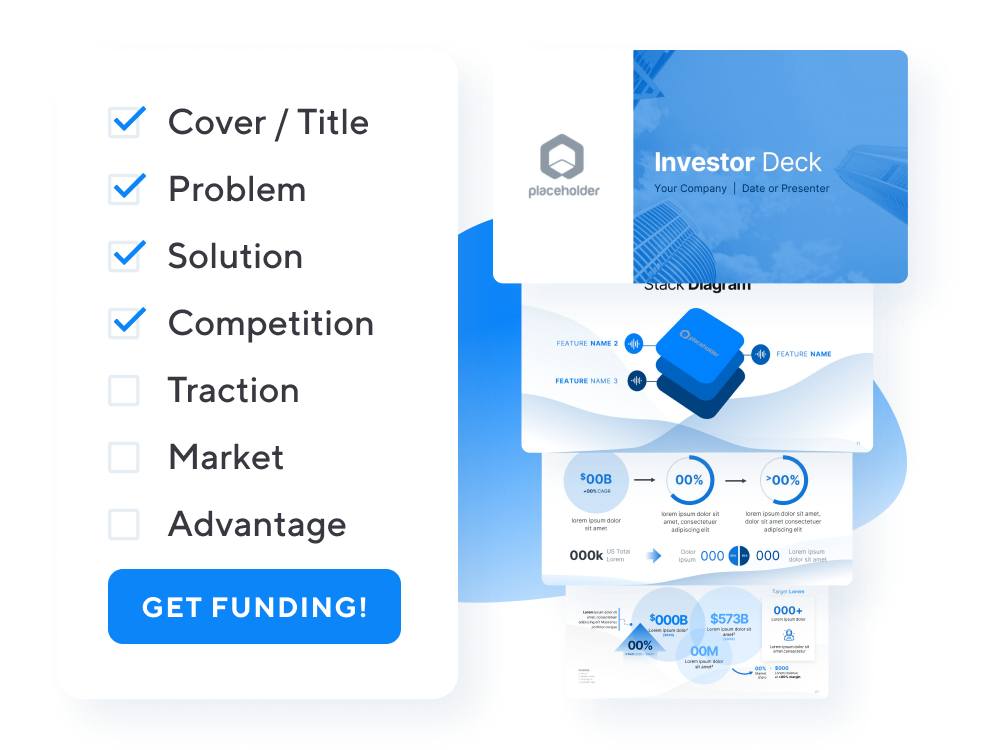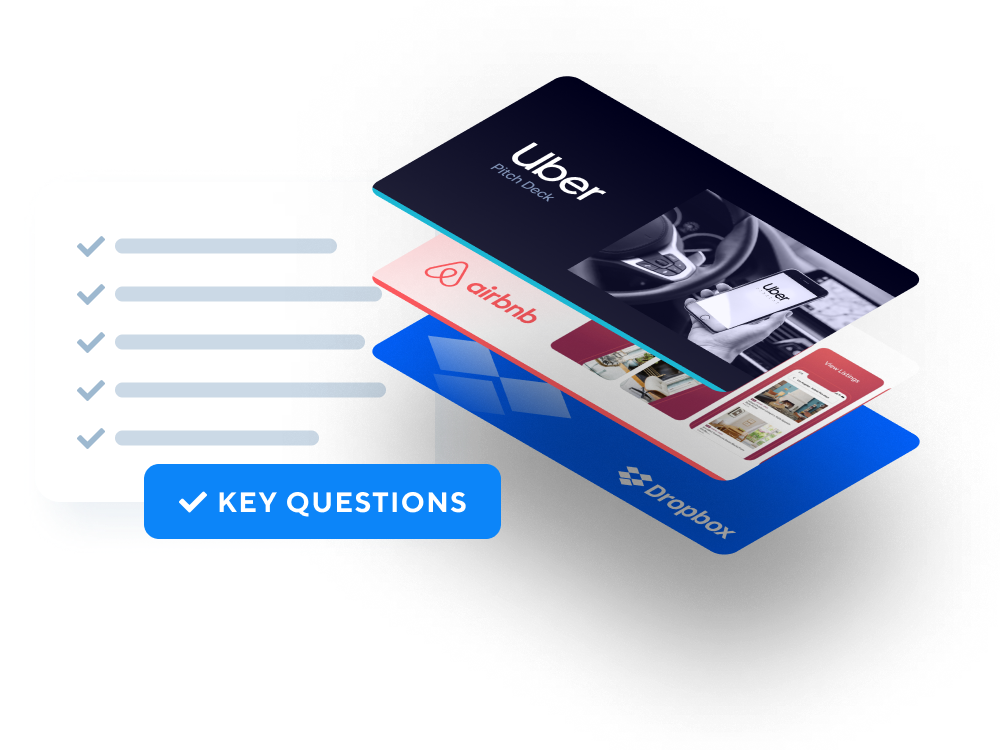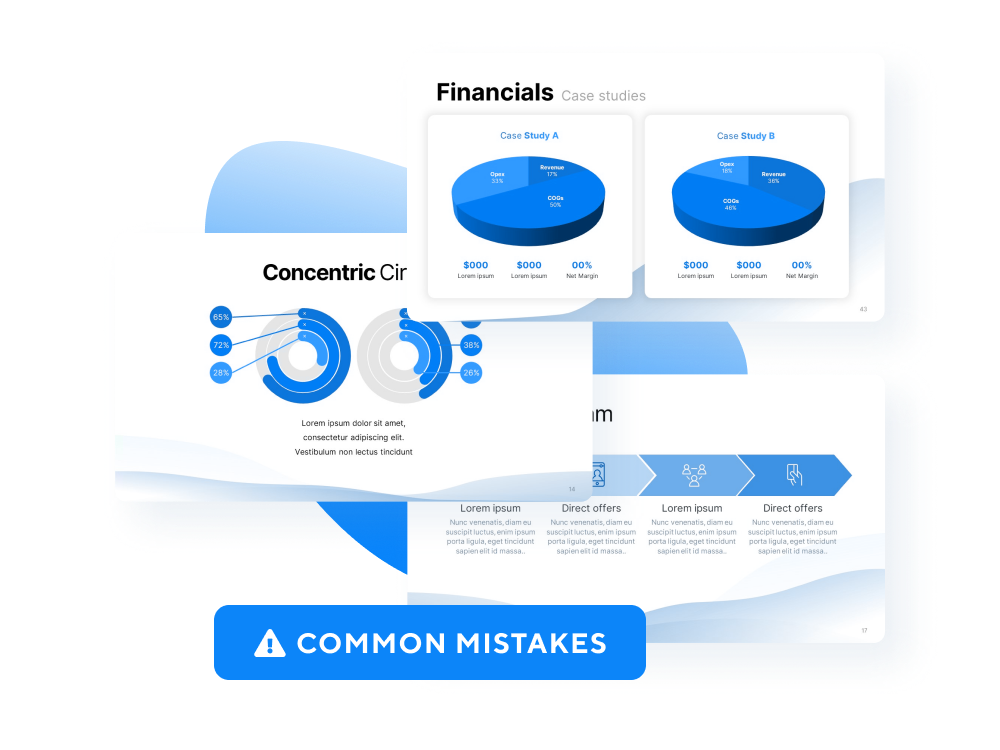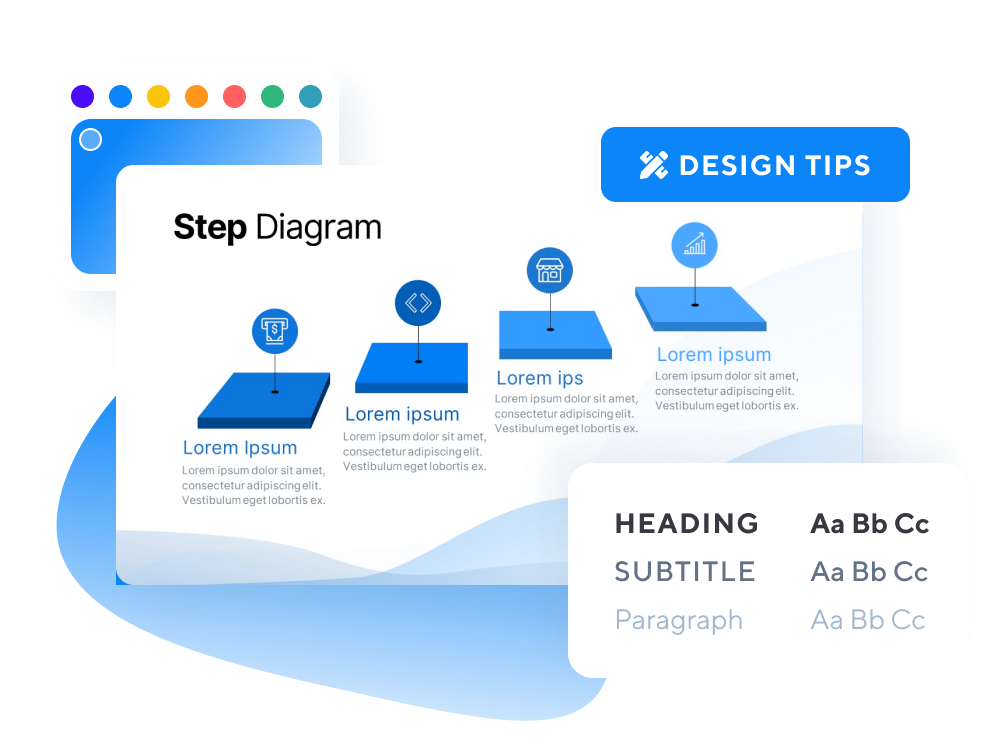Problem Slide
Learn how to build a winning problem slide for your pitch deck with this step-by-step guide.
Learn how to build a winning problem slide for your pitch deck with this step-by-step guide.
“I never perfected an invention that I did not think about in terms of the service it might give others… I find out what the world needs, then I proceed to invent…”
— Thomas Edison
Entrepreneurial problem solving is the process of bridging the gap by resolving societal, business, or technology issues by pioneering innovative solutions. A true entrepreneur can envision an opportunity gap to find the difference between what is and what could be.
Some founders may choose to lead with an opportunity slide (instead of the problem slide) for products and services that don’t necessarily solve a problem, but instead focus on developing something new (ie. real estate projects, hospitality and entertainment products)
If you want to build the next big startup, you must solve a widely shared, high-cost pain point with an effective solution. A compelling and relatable problem slide is the lynchpin of a winning pitch deck. Investors are most enthused about finding startups that address undervalued market opportunities and solve big problems.
Follow along with this brief guide for what you should include in your pitch deck’s problem slide:




The best problem slides explain a relatable and widespread problem in terms that anyone could understand. This slide should convey a deep understanding of your customers pain points and how existing solutions fail.
The key is to present the problem in a way your audience can easily relate to & understand. Everything should be explained in the simplest possible term. Using visuals such as infographics to spotlight data points that convey your message is a fantastic approach.
Most problem slides focus around a brief one-sentence statement that describes the key problem the startup solves. Below are some examples of winning problem slides from pitch decks for household names like Airbnb, Uber, and Sequoia Capital:
Build your investor presentation with the pitch deck template created by the experts behind Fortune 100 companies & Y-Combinator alums – trusted by hundreds of founders.